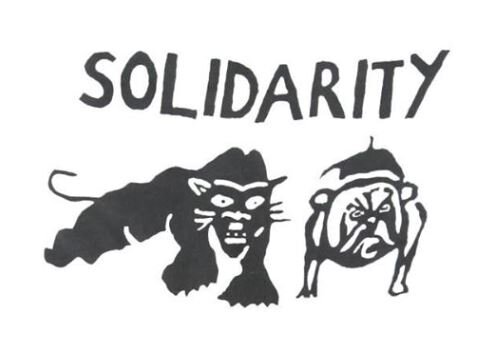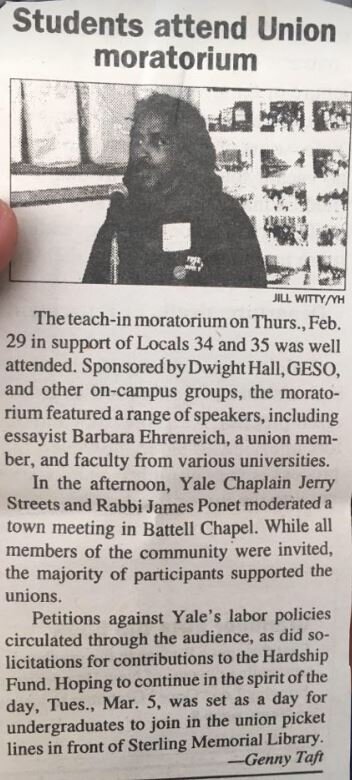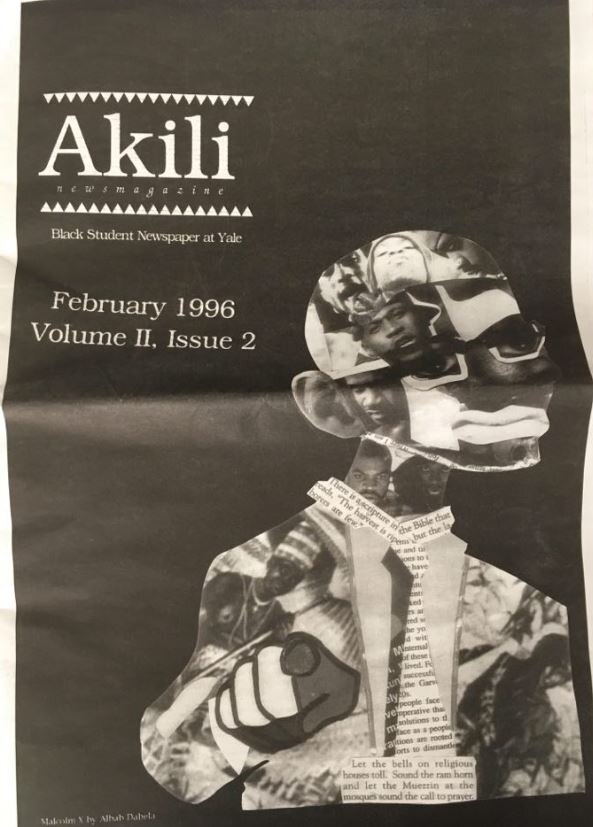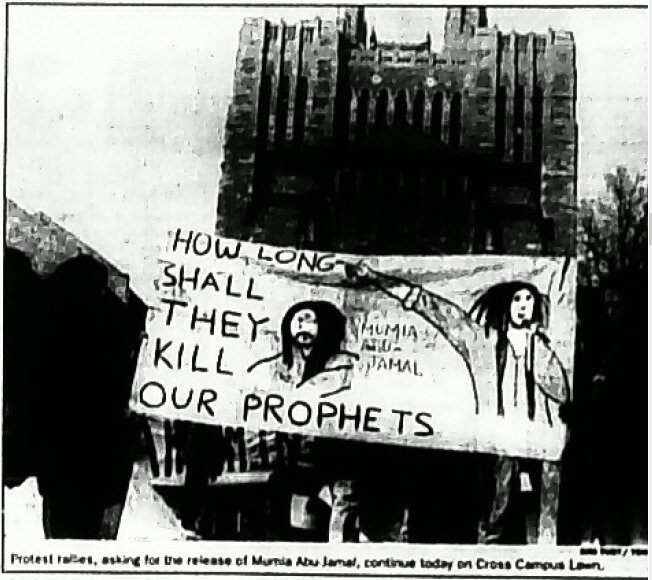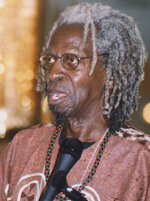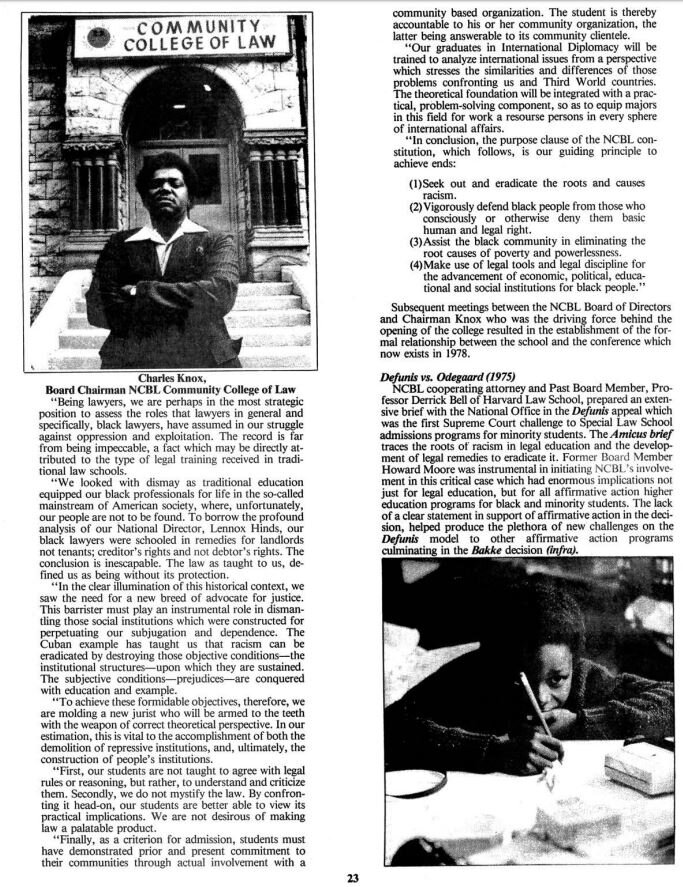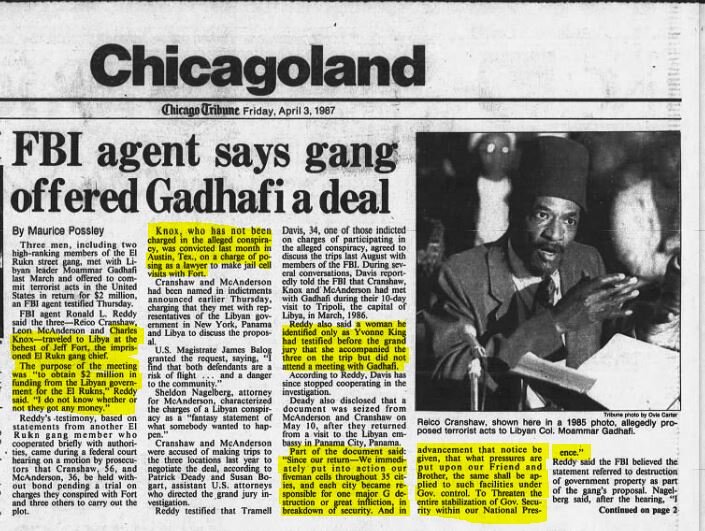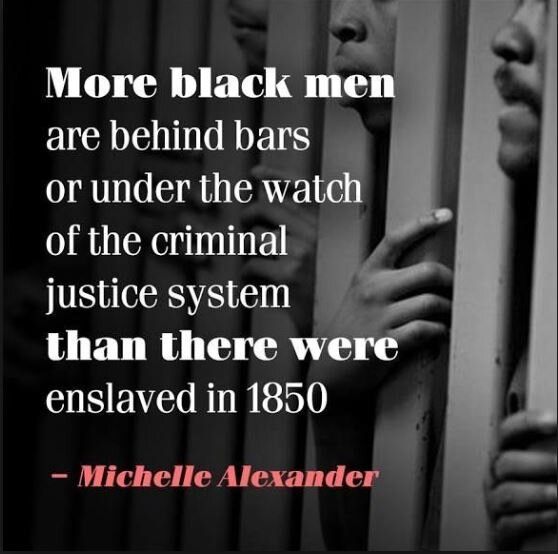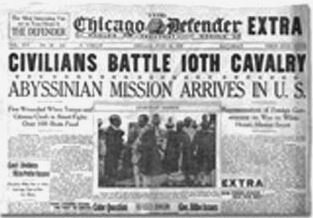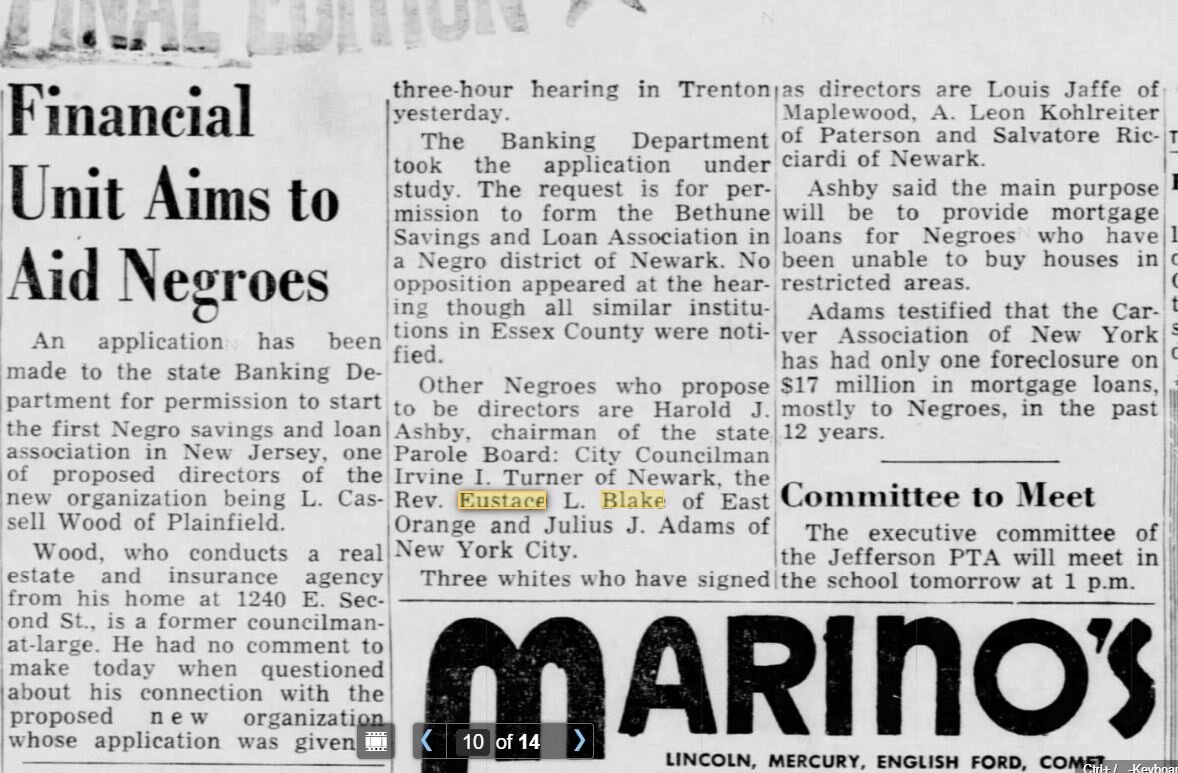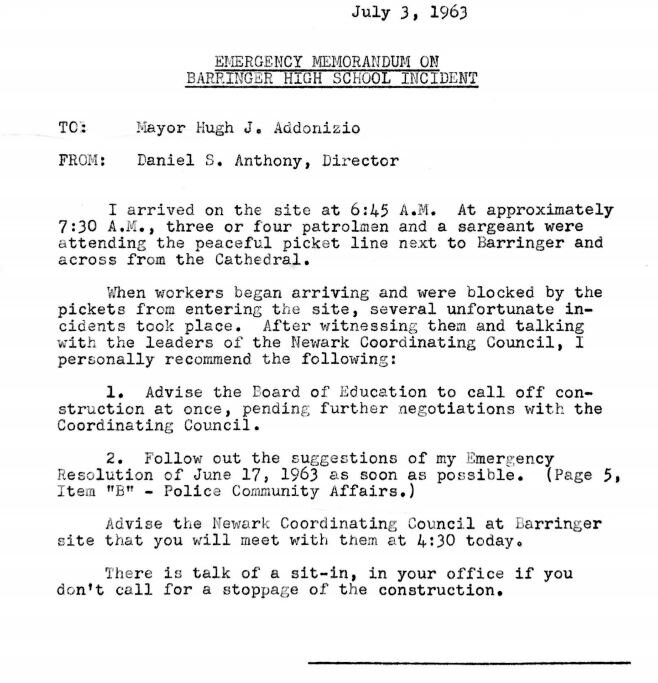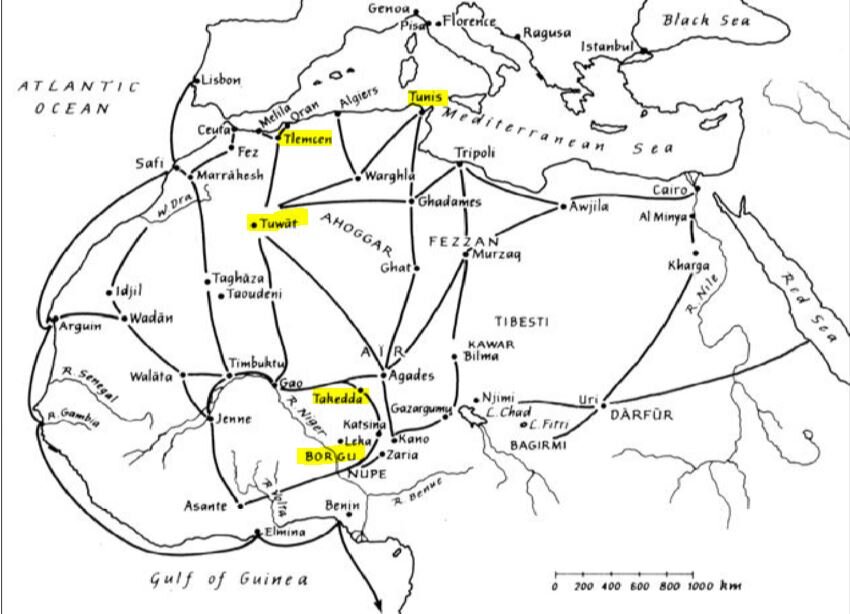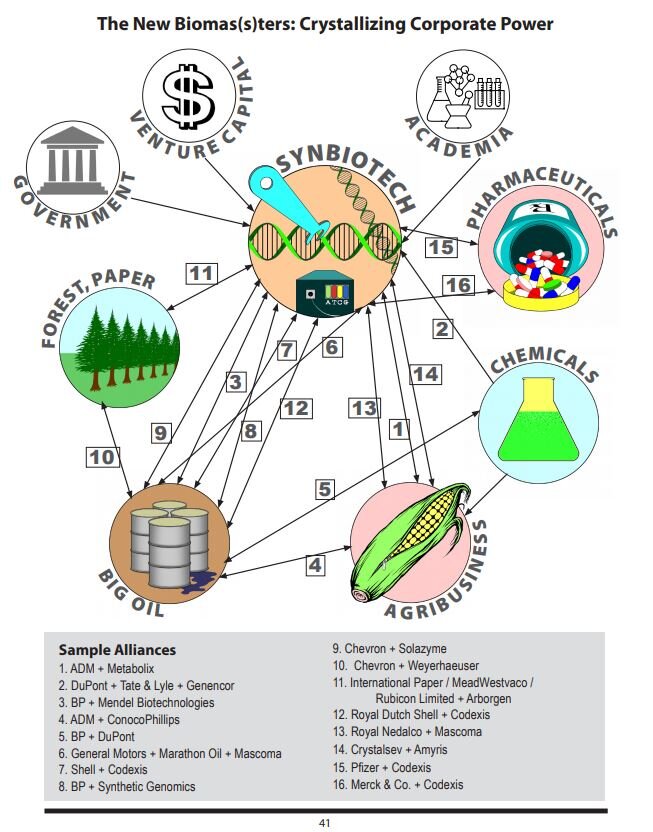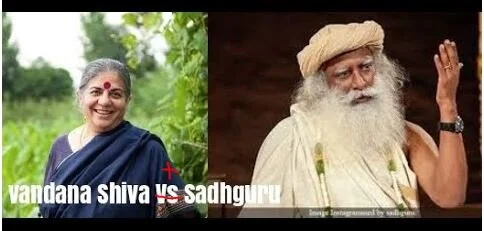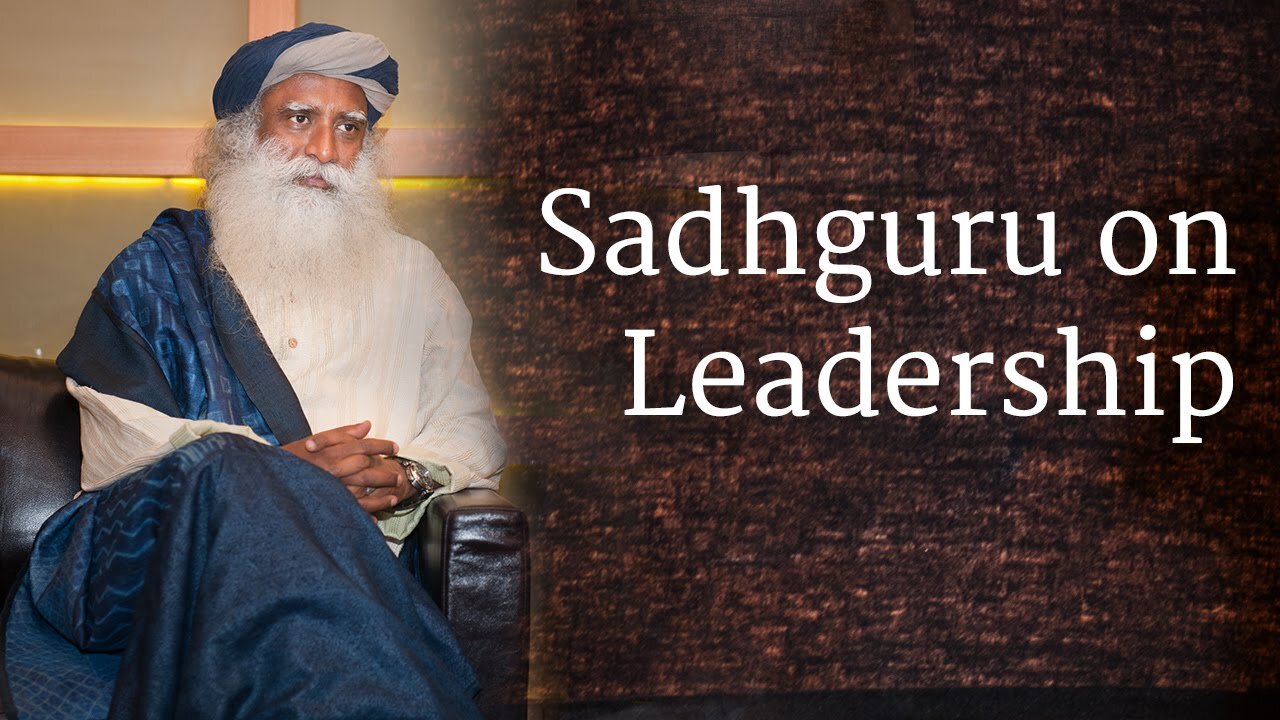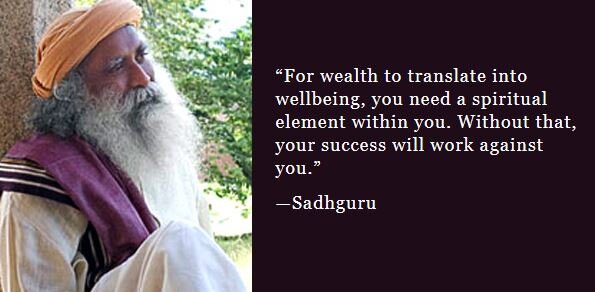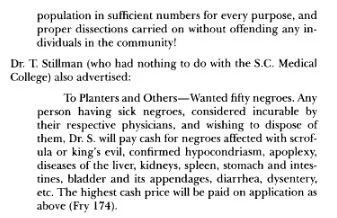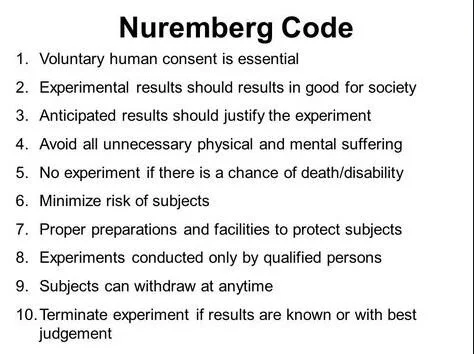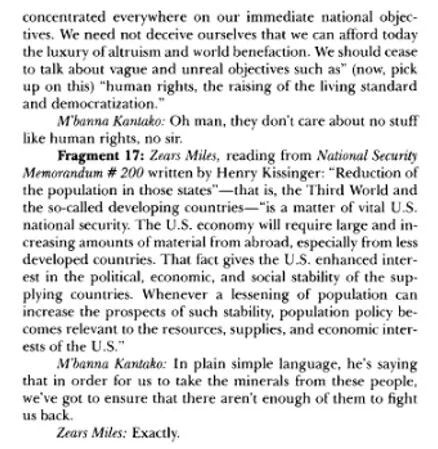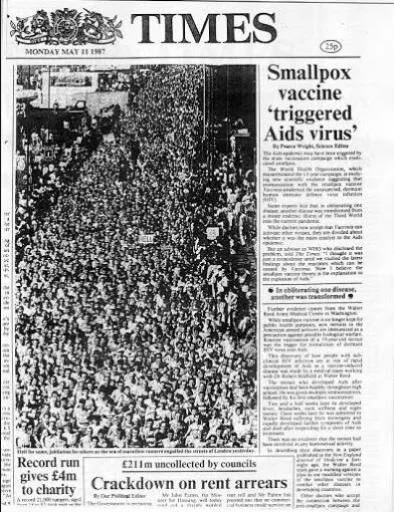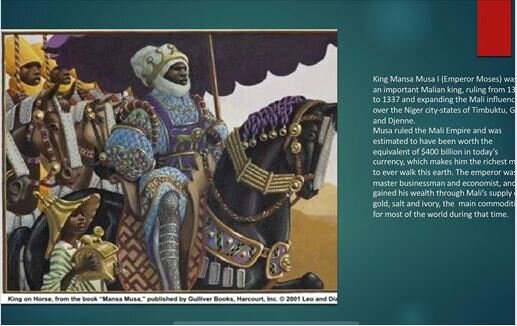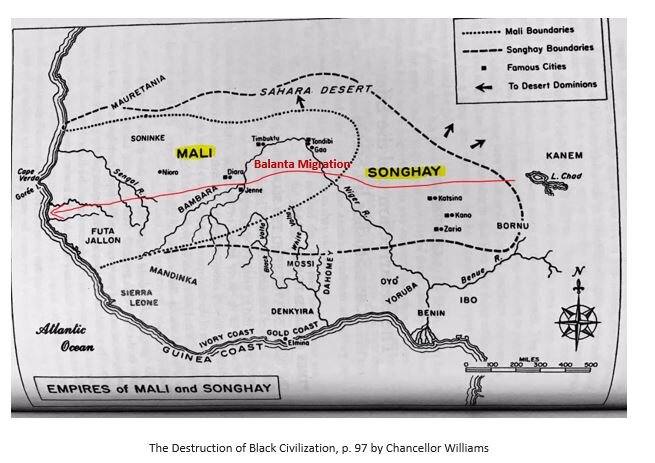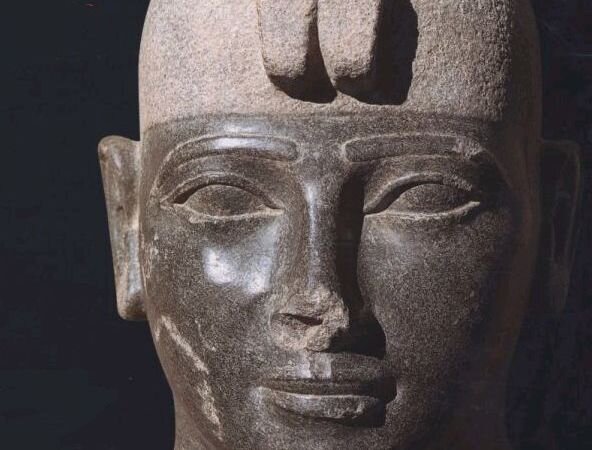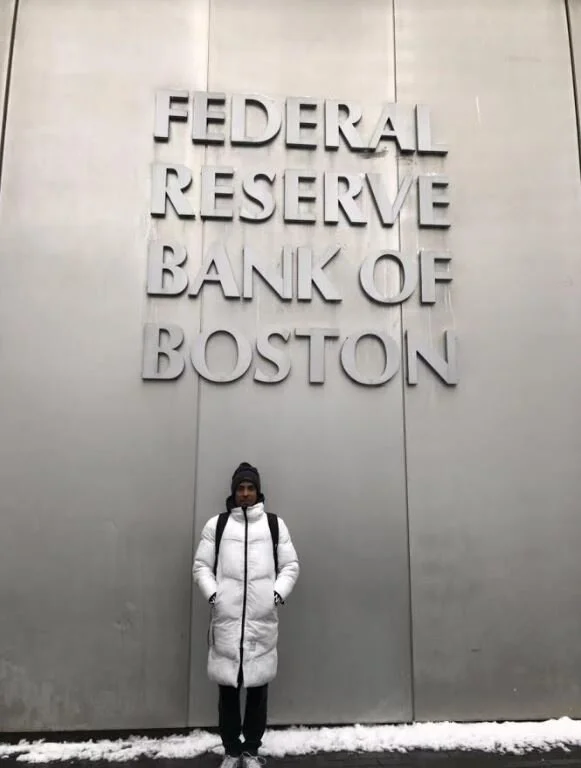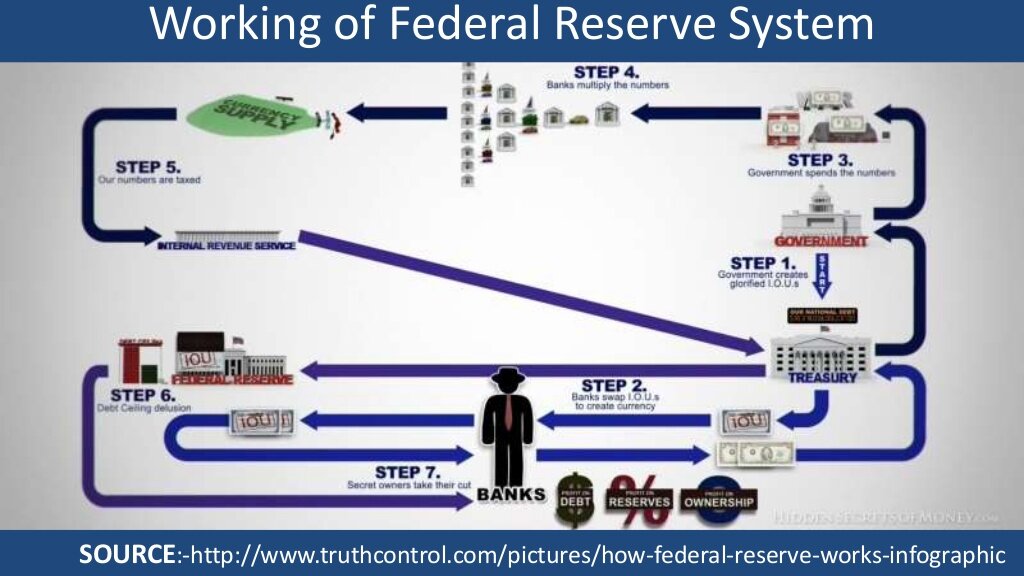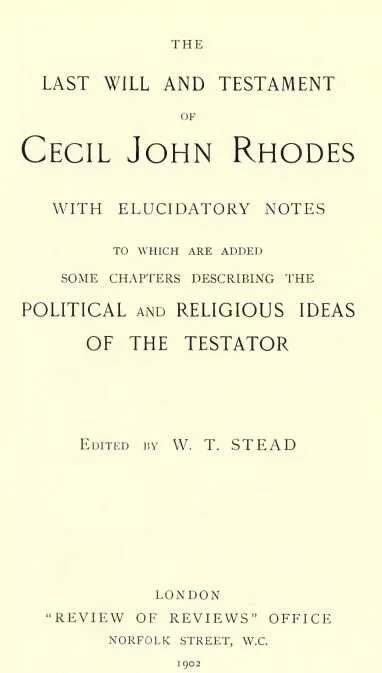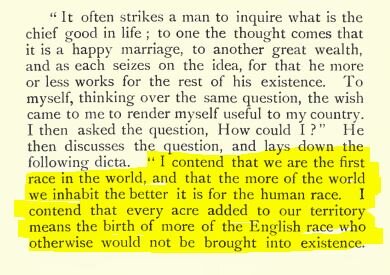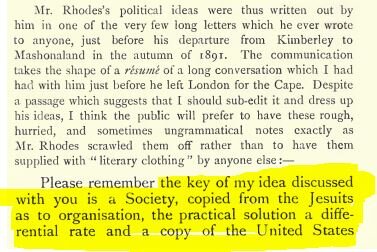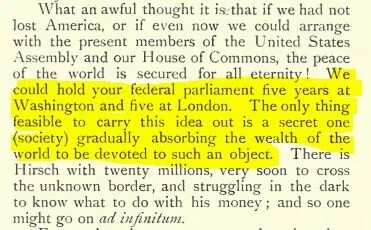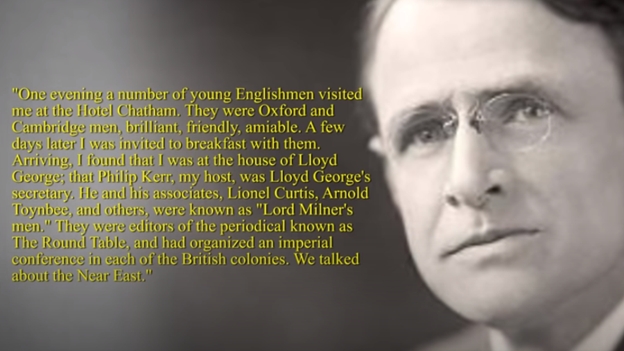“Providing successive generations with the opportunities and circumstances to identify their mission, obtain the necessary training to fulfill their mission and provide the support needed through these steps are vital in ensuring that successive generations can identify and actualize their missions. This process is based in the Onyame Nhyehye paradigm and is called the Nyansa Nananom process, which means ‘ancestral wisdom.’ Leadership is learned under the tutelage of one’s elders and through meaningful experiences.”
- Council of Independent Black Institutions (CIBI) Final Newspaper
On my recruiting trip to Yale University in 1989, I had a mystical “out-of-body” experience in the Kiphuth Pool inside the Payne Whitney Gymnasium. My ancestors told me to enroll at Yale.
In 1993, my ancestors told me to leave Yale, two months before graduation. They needed me. They had a mission for me. They did not want me to become a tool of white supremacy by working in corporate America and integrating into their system. No. The ancestors needed me to become a freedom fighter, a revolutionary. I did not know it at the time, but they needed me to gather the scattered Balanta people who were taken from their homeland.
I left Yale and looked for The Revolution. My journey started with the Black Panther Party in New Haven. One of its devoted members from the 1960’s, George Edwards, was still active and became my mentor.
George Edwards on the steps of the Superior Court in New Haven, CT
However, there was no Black Panther Party to really speak of in 1995. Yale officials, including members of the Afro Am House, discouraged students from getting involved with “crazy George”. But I spent more and more time with him.
I joined Union Local 34’s strike against Yale University, demanding a living wage for its mostly black workforce and spoke at University forums, marched on the picket lines, and along with a group of students, boycotted my graduation ceremony at Yale.
I began writing articles in Akili, the black student newspaper at Yale.
George showed me how to get resources from Yale University and use them to support political prisoners, most of whom were aging Black Panthers or BLM soldiers. Through George, I made contact with the International Concerned Family and Friends of Mumia Abu-Jamal and organized three days of activities on the Yale campus for the National Day of Student Protest in Support of Mumia Abu-Jamal. After the event, a group of students approached me and told me that FBI agents had come to their dorm and were asking questions about me. That’s when I first became aware of FBI surveillance that George warned me about.
I eventually left New Haven. I attended a Political Prisoners Conference in Boston and met up with Pam Afrika again. Then I went to Philadelphia to work with MOVE. I learned all about the August 8, 1978 confrontation as well as the bombing of MOVE. Pam and Ramona Africa talked to me about MOVE people and John Afrika and I read all of the MOVE First Day Newspapers that taught me the strategy of JOHN AFRICA who said,
“IT IS PAST TIME FOR ALL POOR PEOPLE TO RELEASE THEMSELVES FROM THE DECEPTIVE STRANGULATION OF SOCIETY. THE SYSTEM HAS FAILED YOU YESTERDAY, FAILED YOU TODAY AND HAVE CREATED THE CONDITIONS FOR FAILURE TOMORROW. THE LAWYERS ARE JUST AS CORRUPT AS THE THE JUDGES THEY CONFRONT. THEY ARE HARVARD AND PRINCETON AND CORNELL AND YALE TRAINED AS THE JUDGE TO DECEIVE THE IMPOVERISHED. TRAINED AS THE JUDGE TO PROTECT THE ESTABLISHED, TRAINED BY THE SYSTEM TO BE AS THE SYSTEM, TO DO FOR THE SYSTEM, EXPLOIT WITH THE SYSTEM.”
By the time I found MOVE, they were focused on freeing their nine brothers and sisters that were in jail, the MOVE 9, as well as Mumia Abu-Jamal. But what I was looking for was the same kind of atmosphere that MOVE had in the late 1970’s and that time had past. I still had not found The Revolution I was looking for.
Shaka Barak as I remember him
Eventually I returned to Chicago. There I started working with Shaka Barak (Aonde T Dansby), founder and President of the Marcus Garvey Institute, Former UNIA 3rd Assistant President General and Minister of Education, and one of the last students of General Charles L James of Gary, Indiana. General James was one of the original graduates of Marcus Garvey’s School of African Philosophy in 1937. Garvey reported to the readers of the December 1937 Black Man:
The School of African Philosophy has come into existence after twenty-three years of the Association's life for the purpose of preparing and directing the leaders who are to create and maintain the great institution that has been founded and carried on during a time of intensified propaganda work. The philosophy of the school embodies the most exhaustive outlines of the manner in which the Negro should be trained to project a civilization of his own and to maintain it.
According to General James,
“The class became one family. We ate together, roomed together, studied together, recognizing the professor as the chief architect of our intellectual destiny. As for me, it was a dose of humility mixed with the yearning for knowledge. For thirty days and nights, with two sessions per day, mass meetings at 8 o’clock p.m., studying until the early morning hours, we had no time for anything else but study, study, study. Then, finally, came graduation. Let the record show that I received the highest grade. In every point of examination I was graded ‘E'. My classmates all agree that I was the leader of the first class in the School of African Philosophy. We were charged with guarding the written course with our lives. The unwritten course was to be engraved on the tablets of our memory. As I write this, I am sorry to announce that all my classmates of that first class have joined with the Rt. Excellent Marcus Mosiah Garvey and our other ancestors. . . . As the only surviving graduate of the first class, it is important for me to protect the interest of those who preceded me into eternity and knowing that there are forces that are trying to distort history . . . Let me hope that into whomsoever’s hands these lessons fall, that they may use them wisely. For in these lessons there is eternal life for Africans at home and abroad. . . .”
With Shaka Barak, I completed the Course of the School of African Philosophy. This I considered to be my Graduate studies in Philosophy and I now had a B.A. Degree in Philosophy from Yale University and an M.S. Degree in African Liberation from Marcus Garvey’s School of African Philosophy. Baba Shaka and I did a few projects together at Kennedy King College and he introduced me to elder Silas K. Brown. The three of us produced the booklet, Consumer Education: What is It? The Teachings of Silas K Brown. We also made several appearances on Silas’ WKKC weekly radio show, the Consumers’ Eye.
During this time I also found Baba Hannibal Afrik, a former leader of the Republic of New Afrika’s military forces, who at that time was President of the Chicago Chapter of the National Coalition of Blacks for Reparations in America (NCOBRA).
Three images of Elder Baba Hannibal Afrik
At the time of Baba Hannibal’s transition to the ancestor realm, the Final Call newspaper stated,
“Baba Hannibal Afrik, born Harold E. Charles, departed this life June 27, after a lifetime of work for the freedom and development of Black people. The Chicago schoolteacher, instructor at Northeastern Illinois University in Chicago and longtime activist was man on a right course.
During funeral services here July 9, the Honorable Minister Louis Farrakhan and family and friends of “Baba Hannibal” remembered him in services punctuated by a spirit of joy.
The Minister noted that the man and woman who find their purpose and fulfill it are indeed blessed individuals. He credited Baba Hannibal, a Nationalist and Pan Africanist, with helping him to find his purpose. When some wanted to take my life, it was Baba Hannibal and others who stood with me, the Minister said, recalling the late 1970s and early 1980s as he sought to rebuild the Nation of Islam.
Baba Hannibal worked with anyone who was about the business of progress for Black people, the Minister said, offering one of many lessons to be gleaned from the life of this great scholar, educator, institution builder and freedom fighter.
Labels did not deter Baba Hannibal from finding the path to unity and seeking to build a separate and independent nation for Black people, which is line with the will of God, Min. Farrakhan added.”
I started attending NCOBRA meetings led by Baba Hannibal and Erline Arpo at the Washington Park Field House on the south-side of Chicago but soon became frustrated. Most of those who attended the meetings were elders and they no longer seemed militant to me. There was no “action” and I didn’t see any of my peers. In my book, From Yale To Rastafari: Letter to My Mom, 1995-1998 I wrote,
“I met Hondo (member of the Spear & Shield Collective and publisher of their Crossroads underground newsletter) the last time I was in Chicago, back in 1995. He was the only dreadlocked brother at the Sunday afternoon National Coalition of Blacks for Reparations in America (NCOBRA) meetings. I remember vaguely him telling me about this radical community school that was trying to throw safe, weekly parties for the youth. On our way to the Dixon Correctional Center to visit political prisoner Atiba Sana, we talked about the challenges of community work smack in the middle of heavy gang-activity. . . . Crazy as I was, I was attracted to it. Having been one of a handful of black students in a rural Chicago suburb, and later at Yale University, I was after what Marcus Garvey calls a “racial re-education.” I saw it as a manifestation of God’s will when Hondo picked me up at Chicago’s Union Station and drove me to political education class (PE Class) at the Nkrumah Washington Community Learning Center (NWCLC). About the man who governs the center and would become my mentor, Hondo had only one thing to say – he’s intense!
Crossroads Vol Six #1 published by Brother Hondo
I quickly found out exactly what he meant. After introducing me to Irish “El-Amin” Greene, I was invited to sit in PE Class. For the next four hours, El-Amin talked – fast, loud and hard. His voice is neither deep nor soft. It is full of a thousand clear and emancipated thoughts travelling at a thousand miles a second. . . . El-Amin offered me a place to stay. . . . I was especially excited to have access to their cases of books on black, African and world history. . . .If I was scared then, I was absolutely frightened by the prospect of the future – less jobs, less money, no welfare, more people, more prisons, more babies being raised without any adult guidance, more drugs, guns and homegrown militias and terrorists amid the backdrop of global imperialism and the threat of a nuclear Holocaust, all started by the genocide of African Americans by white supremacists in the U.S. and its government. There was little difference to me between the area around 51st Street and Ada and pictures I saw of Liberia, Sierra Leone and Zaire. I remember vividly as El-Amin walked me around the neighborhood pointing out lines of gang demarcation. He showed me houses in the area and introduced me to the families that lived in ratted out, broken down houses in the area and introduced me to the families that lived in them. . . . If I needed to prove myself, a black revolutionary intellectual from Yale University, going to the Moes in the heart of the Black P Stone Nation and working to politicize the gangs as part of the international liberation struggle was the best way to do it.
El Amin had begun to direct my studies towards the law. Taking me to its old location, El-Amin explained to me the history of the National Council of Black Lawyers Community College of Law and International Diplomacy where he used to work. He provided documents about its co-founders Dr. Charles Knox and Dr. Y.N. Kly, both distinguished experts in international law and diplomacy, and provided me with textbooks on the U.N. and its procedures. One book in particular would change my life the way the Autobiography of Malcolm X had done: International Law and the Black Minority in the U.S. by Dr. Y.N. Kly. Along with another of his books, The Black Book (which details Malcolm X’s program to internationalize our struggle through the Organization of Afro American Unity), I gained some clarity on what must be done and what I must do, in order to gain relief from genocide and win reparations. I thus began writing Ras Notes: Conceptualizing Our Case for the U.N. At this time, I established communication with Dr. Kly’s International Human Rights Association of American Minorities (IHRAAM) and UHRAAP. I then began researching U.N. resolutions through the internet at DePaul University, and obtaining articles, petitions, and reports from NGO’s concerning our case. From these I began drafting the Petition of the Nkrumah-Washington Community Learning Center on Behalf of their Members, Associates and Afro-American Population Whose Internationally Protected Human Rights Have Been Grossly and Systematically Violated By the Anglo-American Government of the United States of America and Its Varied Institutions.”
By that time, IHRAAM had facilitated communications between the National Organizing Committee for the Million Man March based in Chicago and were preparing for an intervention at a meeting of the UN Working Group on Minorities, May 26-30, 1997. At NWCLC, I was being trained to become the next generation’s international legal advocate for African American self determination.
Concerning Dr. Knox and the National Council of Black Lawyers Community College of Law and International Diplomacy, Natalie Y. Moore and Lance Williams write in their book, The Almighty Black P Stone Nation: The Rise, Fall and Resurgence of an American Gang,
“During the time Farrakhan busied himself resurrecting the new NOI, he used various venues around the city of Chicago to hold meetings with his followers, including the Black Lawyers’ Community College of Law and International Diplomacy at 4545 South Drexel. Farrakhan’s friend activist Charles Knox had established the school in 1979.
Knox taught at Northeastern Illinois University’s Center for Inner City Studies. Not only did he have strong ties to Black Nationalists, Knox had an equally strong connection with Chicago street gangs. The leadership of the Stones, Lords, and Disciples respected him. Knox allowed Farrakhan and the NOI to use the Black Lawyers’ College as a meeting place, and he also let the El Rukns host activities there. It was through Knox that Farrakhan and Chief Malik (Jeff Fort) became acquainted. . . .
The National College of Black Lawyers, an old converted mansion just a few blocks away from The Fort, was controversial because it had no accreditation and investigations alleged El Rukn business took place in the facility.
So I went from a somewhat stale environment at NCOBRA to the intense and frightening environment at the Nkrumah Washington Community Learning Center (NWCLC) in the heart of gang territory in Chicago.
In another excerpt in From Yale To Rastafari: Letter to My Mom, 1995-1998 I wrote,
“ I took the biggest room in the attic and moved in some stuff. I was especially excited to have access to their cases of books on black, African and world history. I also looked forward to listening more to El-Amin and “fitting in”. Here, I presumed, would be further “racial re-education” as Marcus Garvey put it. I was scared shitless when on Fridays everyone would come over to watch movies, dance, gamble, drink, smoke blunts, and fuck. Straight up in ya face. Gradually, I would come to see some of what’s behind it all – underdevelopment, realities of gang life, prison life, and ghetto “hood” life, the desire to enjoy life in spite of it all, psychology of NIGGAZ . . . Never before had I been somewhere where one was supposed to leave the car doors unlocked in case it was necessary to run to the car and speed away from the police, another gang, a store owner, or your own family – uh, did I say the police? Once I had my grill busted (took a violation) for leaving a brother at the store – three blocks away! . . . .
Because they were also trying to provide general education, cultural education, and leadership training, I was attracted to their NWCLC institution and volunteered to “do whatever I could” to contribute. I would come to find my niche on the computer. Because of my research and desktop publishing skills, I immediately began reading the institutions materials. This led naturally to publishing the Nkrumah-Washington Sceptre and to updating and writing grant proposal. These things I did from my heart because I valued my continued development in these areas which were being well served at NWCLCI.
El-Amin was concerned, however, that I receive compensation for my efforts, lest at some time in the future, I should feel taken advantage of. He found various ways to employ me and contribute to my development all at the same time. Some community members needed “pluggers” for their parties. We did them on the computer. Others needed resumes. We did them on the computers. Some needed letter for their probation officers. We did them on the computers. As there were so many students running in and out of the building, it was necessary to make I.D. cards. We did them on the computer. For each thing we charged a little bit of money – a dollar or two – and I found I had enough money to eat and thus I found myself with food, clothing plus a job helping my community and free classes and free books. . .
Thus, began my education in business, institution building and community affairs. I abandoned my newsletter, Awake & Aware right in the middle of the December 25th edition, and devoted all my faculties to NWCLC. . . . I was responsible for securing and introducing a canon BJ620 color bubble jet printer and a Hewlett Packard ScanJet 4p scanner to NWCLC. . . .I had planned to use the equipment to earn money preparing proposals, resumes, “pluggers”, business cards, etc. . . .
Volume 1, Issue 1 of the Nkrumah-Washington Sceptre came out in December 1996. At this time, I also drafted my first grant proposal, setting forth the foundation of my work with NWCLC. This grant proposal was for technical assistance in the form of $1,000 from the Crossroad Fund. This money was to fund the Serious Action for Goals in Education (SAGE) project. The project had two branches: the Library Upgrade Project (Look UP) and the Stepping Into The Information Age Project (SIIAP). Their aim was development of human and material resources in information age technology (computers) and management information systems. [I also wrote] individual proposals for the Black United Fund ($3,000), the Northern Charitable Trust ($?000), the UPN-Advocacy Awards ($25,000), Albert Pick Jr. Fund ($2,500) and updated and resubmitted the existing Girl’s Best Friend proposal ($10,000).
During my last semester at Yale I had begun scanning images and manipulating them, adding text and creating page layouts. I used this process to desktop-publish my senior essay as well as to raise money for Mumia Abu-Jamal. I was eager to use the vast resources in NWCLC library to further this effort. I did not, however, anticipate the heavy competition to use the equipment, nor the variety and magnitude of the distractions from development. I grew frustrated at having to wait until early morning hours to find peaceful, quiet time to contemplate and work on the computer. Nevertheless, everybody began learning fast, especially El-Amin, Mordecai, and myself. El-Amin focused on using the scanner and computer disks as copying and storing mediums. He began scanning all the school’s records, pictures, etc. Mordecai focused first on the scanning software and later on computer hardware and upgrades. I continued to focus on desktop publishing.”
On January 27, 1997 the Nkrumah-Washington Community Learning Center was raided by the Chicago Police, the Bureau of Alcohol, Tobacco and Firearms (ATF), the Secret Service and special Gang Task Force.
Our computer equipment was seized and PE Classes stopped. While being detained and question, the ATF officers informed me that we had been under surveillance for a long time and that they could tell me every conversation that I had in the past two weeks. Irish El-Amin Greene, the Center’s founder and director, was being charged with “counterfeiting.” They told me that they knew I wasn’t involved, but that I was still facing up to fifteen years in prison if it went to court and that I could prevent this by cooperating with their investigation. My exact words to them were, “Mr. Greene has taught me more and helped me more than any professor at Yale. Whatever I can do to help Mr. Greene I am going to do to help him.” And that was the end of our conversation.
The case went to court and we conducted our own defense. The investigators did in fact find images of money scanned into our computers, but none of the images contained both a front and a back of the same size. Our defense was that we used the images to promote our parties. El Amin had me go all over Chicago taking pictures of Moneygram’s advertising campaign. On billboards and park benches all across the city, Moneygram’s campaign showed twenty dollar bills and stated, “It’s All About The Benjamins!” Our defense was simple: If Moneygram could use images of money for their advertising campaign, why couldn’t NWCLC use the same images to advertise its parties? Greene was found not guilty, but the incident disrupted operations at the center and I left to become more involved in the Rastafari movement in Chicago.
At that time, there were a few Rastafari institutions in Chicago. There was the Reggae clubs Wild Hare and Exodus, there was the Rastafari bookstore called Frontline that began in 1987 and was located on 75th Street for fifteen years,, and there was a social club called King Solomon’s Mines. Every year there was a big Haile Selassie I celebration in Washington Park, which was founded in 1974 by Elder Gabriel (Patrick Mickiel Diaz ), one of the earliest Rastas and Nyabinghi drummers from Jamaica and close friend of Bob Marley’s mentor Ras Mortimo Planno (who would become the only man to receive two Gold Medals from Emperor Haile Selassie), and Tzaddi Wadadah Terrier II a.k.a. Selector T. Elder Gabriel was another of my mentors and I lived in his basement for over a year.
At the Haile Selassie festival in 1996 I remember when Mutabaruka said from the stage that Rastas were “talking too much about Africa and not walking enough to get there - Africa is a land, not a state of mind.” That inspired a small group of us to take Repatriation seriously. After the raid on NWCLC, I shifted from political education and black nationalism and began to prepare to return to Ethiopia.
I started hanging out at the Wild Hare, Frontline and King Solomon’s Mines with Ras Sekou Tafari, Abba Kisi, and Jahsyl and learning about Rastafari. I finally found The Revolution I was seeking. The Rastas were militant. They were spiritual. They were political. They were cultural. They were intellectual. They were openly defiant. They were mystical….. I found my peers here, others who were seeking African liberation, and in particular, Repatriation, and were willing to completely commit and order their lives to it. From Rastafari people I learned,
“Haile Selassie I the First, Conquering Man Lion of Judah came TO ORDER THE PEOPLE. The confused mentality that was fostered by Slavery had burned out and the mind had to be set on a course of HIGH ORDER . . . . When one looks at the first inspiration that came to I&I from His Majesty, it was an INSPIRATION through the establishment of IVINE ORDER. It was not an inspiration to create a mere RELIGIOUS MOVEMENT. Neither was it an inspiration to create a mere social movement nor a political movement. The vision was to create an IVINE ORDER OF LIVITY that encompassed ALL aspects of life. . . . Without a Pan-African vision that has as its goal the establishment of Black Nationhood with a restored concept of BLACK ROYALTY AND DIVINITY, the root of the problems that now face Black civilization cannot be rooted out. THE TRUTH MUST BE FACED THAT THE PROBLEMS ARE NOT ONLY ECONOMIC, POLITICAL AND CULTURAL, but they are also SPIRITUAL in the sense of having been subjected to unnaturalness for so long that naturalness becomes an unwelcome stranger. TRAPPED, domesticated and tethered for centuries to the stake of unnaturalness the caged and domesticated creature is apt to lose its spiritual equilibrium and forget what is clean from what is unclean, what is right from what is wrong, and what is high from what is low. This is the condition of the ‘ex-slaves’ in this time, sorely in need of something more than a political movement, something that involves the reshaping of character in the similitude of ROYALTY. . . . If one were to put into one sentence THE MAIN GUIDELINE OF THE NYAHBINGHI ORDER upon which the whole of RASTAFARI IS FOUNDED, it is Resurrection of THE BLACK IDEAL FOR THE PURPOSE OF ACHIEVING BLACK LIBERATION. . .”
Black liberation meant finding an escape from the plantation, from the SYSTEM. I didn’t want to become an economic wage slave so I tried to find strategies that could free my from serving the SYSTEM from 9 am to 5 am every day and having to pay rent. Like my Balanta ancestors who resisted Mandinka and Portuguese oppression by relocating to the mangrove swamps, I relocated to the waste spaces in Chicago and started squatting abandoned building which became my “liberated territories”. I would clean them up and do basic rehab and continue as if I owned the place. My first confrontation with Chicago police concerning my liberated territory took place on July 14, 1997 at 1944 S. California Avenue, Chicago, IL.. I was charged with criminal trespass, but the case was eventually dropped.
In November 1997, I organized the Peoples of Chicago Ad-Hoc Committee in Support of Justice for Mumia Abu-Jamal (PCMAJ) which traveled to Philadelphia on December 4th for the Peoples’ International Tribunal for Justice for Mumia Abu-Jamal held at the Blue Horizon on December 6th. The trip was free to all 11 delegates which included two elders and the Rastafar Livity Nyabinghi Choir. In addition to hanging a large banner of Bob Marley that read, “How Long Shall They Kill Our Prophets?” we drummed and chanted Nyahbinghi during the Tribunal. There, I met Sundiata Sadiq, Gamal Nkrumah (Kwame Nkrumah’s son) and Julia Wright, daughter of famed author Richard Right. I presented a brief outlining international legal arguments and justifications for an international rescue team to rescue Mumia Abu-Jamal from prison to Adekoye Akinwole (Herman Ferguson), a Tribunal Judge, one of the original signers of the Republic of New Afrika’s Declaration of Independence, and the RNA’s first Minister of Education. I had hoped that my brief or parts of it would make it into the Tribunal’s Indictment that was delivered on December 10 to Dr. Purification Quisumbing, Director of the United Nations High Commissioner for Human Rights Office in New York.
“ I am concerned,” I said to Baba Adekoye Akinwole, “that should they begin to march brother Mumia to the gas chamber, that no one will attempt to rescue him. I ask you, a member of the Black Liberation Army (BLA), what is to be done?” Baba Adekoye’s response while receiving my brief was,
“The BLA is and always has been, underground. Do not worry.” That was all he said.
By the summer of 1998, our small group began to get ready to leave America to repatriate to Ethiopia. A passage in From Yale To Rastafari: Letter to My Mom, 1995-1998 reads,
“Some other Rastafarians and I have decided to join forces. His Majesty Haile Selassie has given us 500 acres in Shashemane, Ethiopia. Currently there are 60 families there, and, JAH willing, We will be the next group to go and settle the remaining 350 acres. There are six of Us right now – Yahnaq, whom I consider a brother, Zakiyyah, who is like a first wife, Nikelda, her son Alejandro, and Jahneri, Yahnaq’s wife. Everyone wears dreadlocks and is called, chosen and faithful to His Imperial Majesty, Haile Selassie I, King of Kings and Lord of Lords, Conquering Lion of Judah.
We are planning to go forward to Ethiopia at the end of October of this year. We already have half of our gear and plane fare. In order to prepare for our new life, we have been living out of tents in a remote area where we are growing our own food and herbs and learning how to live without modern conveniences like electricity, cooked food, etc. Since our vegetable crops are not ready, we’ve been eating wild foods which I pick everyday – wild lettuce, dandelion leaves, wild carrot, greens, pepper grass, horsetail, blackberries, ground strawberries. We also buy organic fruit (wholesale) as well as hard wheat berries, buckwheat, and nuts, raisins, peanut butter and coconut. We also sprout seeds and legumes. Because everything is fresh, raw and without chemicals, we are getting strong and healthy, . . . .
The air out here is fresh, and I am breathing normally. I can even smell various herbs, flowers, etc. and can tell if someone is cooking miles away! At night we sometimes build a fire and so long as its not raining, we sleep on the ground uncovered and gaze at the celestial bodies moving across the sky.
We have even built huts from saplings, leaves and mud. During the afternoon when it gets hot, we retreat from the fields and take SIESTAS under the huts which are surrounded by forest and a great green canopy. The wind blows gently – a natural air conditioning, the temperature in the huts can be as much as 10 degrees cooler! They also serve as an infirmary and, in addition to cuts and scrapes, I’ve had to treat Zakiyyah for heatstroke. Out here I get to be me – father, brother, architect, doctor, priest, king, entertainer, everything. So, I am very free and happy. It is a great time of preparation for our journey.
I don’t know if I will be coming back to America. It is doubtful. Just thought I’d let you know.”
October came and went and we did not go to Ethiopia. We were not yet ready. We needed another year. At the Haile Selassie Festival in Washington Park in July of 1999, we were were very joyful because we believed we would be going to Ethiopia and escaping “Babylon” in just a few months before the start of the Babylon New Year, January 1, 2000. With Elder Gabriel and all the Rasta people in Chicago, and the conscious black community in Chicago, we camped and celebrated for three nights in Washington Park, singing praises to Haile Selassie and listening to live reggae music. Then something curious and disheartening happened. My backpack with some of our important documents, a large sum of cash, and other things disappeared from my tent. Then two weeks later, I was ambushed by the Chicago police. Below is the account contained in my records.
I. Charges
Sometime after midnight in the early morning of Friday, August 6, 1999, I, Ras Nathaniel Afrika Tafari (as I was known then) was ticketed for parking on city property, driving without insurance and failure to produce a drivers’s license. I was also arrested and charged with 839 grams of cannabis sativa, a violation of Illinois Criminal Statue 720550/4 of the Cannabis Control Act.
According to Section 550/3(a) of the Act,
“Cannabis” includes marijuana, hashish and other substances which are identified as including any parts of the plant Cannabis Sativa, whether growing or not; the seeds thereof, the resin extracted from any part of such preparation of such plant, its seeds, or resin, including tetrahydrocannabinol (THC) and all other cannabinol derivatives, including its naturally occurring or synthetically produced ingredients, whether produced directly or indirectly by extraction, or independently by a combination of extraction and chemical synthesis; but shall not include the mature stalks of such plant, fiber produced from stalks, oil or cake made from the seeds of such plant, any other compound, manufacture, salt, derivative, mixture, or preparation of such mature stalks (except the resin extracted therefrom), fiber, oil or cake, or the sterilized seed of such plant which is incapable of germination.
Section 550/4(e) states that
“more than 500 grams but not more than 2,000 grams of any substance containing cannabis is guilty of a Class 3 felony.”
II. Ras Nathaniel’s Statement
What follows below is my account of what happened on the night of August 5th. I swear by the True and Living Almighty God JAH RASTAFARI that what follows is true to the best of my knowledge.
On Thursday night, August 5th, 1999, I Ras Iyah, Nehemia and her three youths, and Ella were running errands in my Ford E150 van. It was late when we finally gathered Ella’s belongings which were in storage at a sistrin’s house. As we were exhausted from our efforts, we decided to find a nice, quiet secluded space where we could rest. I suggested that we go to a spot on the beach (the South Cove next to Rainbow Beach just south of the water treatment plant on 79th Street) where I had rested before without being molested.
When we arrived at the beach sometime around midnight, we were all delighted and awed at the yellow waning moon hanging low n the eastern horizon. We felt blessed and thankful to have such a nice place to rest.
After a few minutes, we decided to eat and we began making sandwiches. I was cutting a tomato when the first person spotted Babylon heading our way. I didn’t think much of it because we were parked near the beach, away from the road and therefore I thought no one could really see us. The police car, however, turned off the road and headed straight for us.
The officer parked the car behind the van and trained a bright light on us. Nothing happened for the next minute and we assumed that the officer was running the plates. Finally, an officer exited his vehicle and came to the driver’s window where I was sitting with a tomato sandwich and a knife in my hand.
When the officer approached, he asked me through the open window, “What are you doing?” In my least threatening and most reassuring voice, I replied, “I am making a sandwich.” The officer then asked if I had a license and registration to which I replied, “As a matter of fact, I don’t. They were recently stolen” (a week before at the Haile Selassie I Festival). The officer then asked me if I would step outside the van, joking that I should first put down the knife I was using to cut the tomato. I told the officer, “sure,” put down the knife and opened the door to exit.
I was then asked to place my hands up against the van. Knowing the routine, I declared that I was not carrying any weapons as I placed my hands on the van and spread my legs. It was then that I noticed another officer to my right.
Once I had my hands n the van, the officer to the left started asking questions and I tried to explain the situation to him - that we didn’t want any trouble and that we were just looking for a place where the youths would be safe and we could rest. The officer on my left became agitated at my plea and he asked a question that provoked me to turn and face him like a man to give my answer. When I turned, my right hand slowly came off the van and the officer ordered me to put my hands back on the car. Righ after he gave that command, he asked me something like, “Did I want to go to jail?” I could not hide my natural contempt at such a question, so I turned to my left, and frowning, said, “Of course not!” The next thing I know, the officer to my left was fast approaching with cuffs and the officer to my right had already smashed me up against the van and was using the full force of his body to pin me against the van.
I started pleading, “I’m not resisting arrest, I’m not resisting arrest! We haven’t done anything!” (Note: I was not charged with resisting arrest). I wasn’t resisting arrest, however I was resisting being handcuffed. Never once did the officer say that I was under arrest or declare what it was I was being arrested for. I was violated since the officers used force without ever declaring that I was under arrest….. Thus, I refused to let them put handcuffs on me since I wasn’t notified that I was under arrest (which didn’t happen until after I was booked).
With both officers upon me, we fell to the ground where I continued shouting, “I am a man! I am a man! I can stand up and answer your questions! Let me up! I have no weapons and I’m not resisting arrest!” My cries fell on deaf ears and the officers struggling to cuff me began employing holds and pressure in strategic locations on my arms and hands in an effort to subdue me.
During this scuffle on the ground, the officer on my left stood about 5 to 8 feet from the driver’s side of the van and drew his gun with both hands, aiming it straight at the van. I shouted out, “Officer! put the gun away. There are women and children in the van. Please put the gun away before someone gets hurt. Think about your own family and your career. Put the gun away. Nobody has to get hurt!” I will never forget the officer’s response. Hands slightly shaking, the officer stated, “I don’t give a fuck about your women and children!”
By the grace of JAH RASTAFARI, no one got hurt except fro me (dislocated clavicle and upper ribs, sore thumb). I was eventually cuffed and placed in a squad car where I remained silent and watched what was happening. Never once was I given the chance to simply leave the park, which I would have been more than willing to do.
While I was inside the car, more and more police arrived on the scene. A black officer who appeared to be the highest ranking officer at the scene asked me what was going on and I said, “Nothing officer. We were tired and hungry and we just wanted to find a secluded place where we could rest and where we could look at the yellow waning moon.”
I could see the officers questioning Ras Iyah, but I could not see Nehemia, her youths, or Ella. Somehow the officers searched the van and found the two bushels of leaf herb that I had been drying. One of the original officers came over to the squad car and asked me what was in the basket and I replied that it was “green herb that bears seed of its kind written about in the first book of the Bible.” The officer then began to mock me, saying, “Hey! He says its the first herb written in the Bible, whatever that is!” I said nothing and he left me in the car and went over to the van where the other officers and Ras Iyah were standing.
After some time, Ras Iyah, Nehemia, the youths and Ella were put into a squad car, another officer got into the van and I was taken to District 004 station and processed.
Friday morning I made the “run” — with much dramatics, I was driven first to 11th and State and then next to 26th and California. I was informed that we had arrived too late and that I would have to wait until the next day to see the judge. When I did see the judge (via television monitors) the public defender read my case, noting that I was a graduate from Yale University. When the public defender next read that I was charged with possession of 839 grams of marijuana, the judge said, “hold up!” and asked me what was going on. I replied that I am a Rastafarian and that the herb that was confiscated was leaf used for industrial purposes. The judge then released me on my own recognizance (I-bond). My first court date was scheduled for September 29, 1999 (a hearing to determine probable cause).
III. Search, Seizure and Forfeiture of Property
While I was handcuffed and inside the squad car, police officers searched the van and seized it and everything in it, including 839 grams of leaf herb in two bushel baskets, $1800 in cash ($1500 of which was the Shashemane Fund), two drums, four rugs, clothes (some of which was handmade, one-of-a-kind), camping and cooking equipment, cassette tapes, research materials, personal identification, a wetsuit ($200), books, blankets and tools, all of which falls under the purview of section 550/12 (a)(1-5).
Section 550/12(b) states that,
Property subject to forfeiture under this Act may be seized by the Director or any peace officer upon process or seizure warrant issued by any court having jurisdiction over the property. Seizure by the Director or any peace officer without process may be made: (2) if there is probable cause to believe that the property is subject to forfeiture under this Act and the property is directly or indirectly dangerous to health or safety; (3) if there is probable cause to believe that the property is subject to forfeiture under this Act and the property is seized under circumstances in which a warrant-less seizure or arrest would be reasonable; or (4) in accordance with the Code of Criminal Procedure of 1963.
Section 550/12(c) states that,
In the event of seizure pursuant to subsection (b), forfeiture proceedings shall be instituted in accordance with the Drug Asset Forfeiture Procedure Act.
IV. The Probable Cause Issue
The whole case, and therefore the return of the seized property, hinges first on the probable cause issue. If it is demonstrated that police officers erred in searching the van and seizing property because there was no probable cause, then the possession charge (550/4) disappears and I’m left with only the three lesser charges of parking on city property, failure to produce a valid drivers license and insurance. This combines what I call the “threshold “ defense and the “seed of bad fruit” defense.
Probable cause functions as a key which allows police to enter into one’s property. The moment a police enters your house or begins searching your vehicle, that officer crosses a threshold. Without probable cause, the officer can only cross that threshold illegally. Crossing the threshold illegally provides defendant the “seed of bad fruit” defense which states that because the officer’s action is illegal (foul or bad fruit) then everything that follows from that illegal action is also illegal (foul or the seeds from bad fruit) and therefore inadmissible. Thus, although police did seize two bushels of herb leaf, I contend that it can not be used as evidence for a possession charge because it was obtained without probable cause, illegally and therefore not by the due process of law.
The above is substantiated in People v. Kelly which states that “Defendant’s alleged consent for police officer to search his car was inextricably joined with prior illegal search conducted at officer’s command and such alleged consent, being itself fruit of illegal assertion of authority, could not justify further illegal search winch resulted in discovery of marijuana in defendant’s glove compartment; defendant’s 'consent’ was passive submission to authority and not voluntary relinquishment or waiver of defendant’s constitutional rights.” (People v. Kelly, 1979, 31 Ill. Dec. 537, 76 Ill. App. 3d 80, 394 N.E. 2d 739.)
Several cases set out the kind of multiplicity of inputs (circumstances) which must obtain in order to establish probable cause in these type of cases. In People v. Lang, the court ruled that “At the time that law enforcement officer directed defendant to stop his automobile, officer could not have reasonably inferred from circumstances that defendant was committing or was about to commit or had committed offense and thus stop and seizure of defendant and vehicle were illegal and cannabis plants in defendant’s vehicle were discovered incident to illegal stop.” (People v. Lang, 1978, 23 Ill. Dec 15, 66 Ill. App. 3d 920, 383 N.E. 2d 782). In other words, a mere traffic violation such as parking on city property, is not enough to establish probable cause that a felony is, was, or will be committed.
In People v. Witanowski, the court ruled that “Warrant-less search of defendants’ automobile on highway and seizure of bag of cannabis was reasonable either because defendant’s bizarre and unusually dangerous behavior prior to his arrest , his repeated attempts to flee and his resisting arrest could reasonably have raised a legitimate suspicion that more was involved than a traffic violation, so that the search was reasonable as an attempt to secure an explanation for defendant’s behavior, to preserve evidence or as an attempt to locate weapons and thereby protect the public, or because the evidence was discovered in plan view when officer entered automobile to remove it from highway.” (People v. Witanowski, 1982, 60 Ill. Dec. 537, 104 Ill. App. 3d 918, 433 N.E. 2d 334)
In People v. Erb the court stated that “Mobility of automobile, fact that occupants had been alerted and danger that evidence might never be found again if warrant had to be obtained supported reasonableness of search of automobile after apparent traffic violation and detection of odor of marijuana, and smell of marijuana emanating from automobile and person of defendant who stood alongside automobile afforded officer sufficient probable cause to believe crime had just been or was being committed and to search defendant and second defendant’s suspicious movements and finding of packet of marijuana near her gave probable cause for her detention and search.” (People v. Erb, 1970, 128 Ill. App. 2d 126, 261 N.E. 2d 431.
In People v. Boyd, the court ruled that “Where officer observed defendant emptying marijuana from small wooden box as he approached car that he had stopped for traffic violation and, upon asking for defendant’s identification, officer viewed passenger begin to exit defendants’s car while placing clear plastic bag of same substance in his coat pocket, and, as officer placed passenger under arrest, defendant immediately picked up cardboard box and locked it inside trunk, police officer had probable cause to search defendant’s automobile trunk without a warrant.” (People v. Boyd, 1980, 41 Ill. Dec. 484, 86 Ill. App. 3d 73, 407 N.E. 2d 982).
Thus we can see the exigent circumstances necessary to establish probable cause. MY CASE HAS NO SUCH EXTRA CIRCUMSTANCES. There is nothing gin the three lesser charges (parking on city property, failure to show valid drivers license and failure to show proof of insurance) which, in and of themselves, singly or combined, reasonably gives probable cause that a felony was, is , or is about to be committed. There was no bizarre or dangerous behavior exhibited, no attempt to flee or resist arrest, no evidence discovered in plain view, no detection of odor or smell emanating from the vehicle, nor was nay herb found in or around the defendant or in plain sight in or around defendant’s vehicle.
Even though it might be contended that failure to show a valid driver’s license transforms the situation into more than just a mere traffic violation, unlike People v. Huth, in which the court found that “Where vehicle was curbed as a result of the commission of a traffic violation, where driver was unable to produce a valid driver’s license, and where a check by arresting officer revealed that the driver had no proper license, the circumstances warranted officer’s reasonable belief that he was dealing with a criminal, not a mere traffic violator, and warranted a search of driver and passengers. . . . and the subsequent seizure of marijuana observed in plain view under passenger side of front sear did not violate defendant’s constitutional rights,” in my case a check by the arresting officer did reveal that I had a proper license and therefore should not have aroused suspicion that I was a criminal, and should not have moved the situation outside the purview of a routine traffic stop, and should not have afforded the office probable cause to cross over the threshold.
V. Due Process of Law and International Law
Because most black defendants are ignorant of their legal rights, how to defend them, or what to do once they have a case, the United States of America is able to use the due process of law to steal, kidnap, rob, rape, murder and commit genocide against them. Consider that the 14th Amendment of the United States Constitution reads:
All persons born or naturalized in the United States, and subject to the jurisdiction thereof are citizens of the United States and of the State wherein they reside. No State shall make or enforce any law which shall abridge the privileges of or immunities of citizens of the United States; NOR SHALL ANY STATE DEPRIVE ANY PERSON OF LIFE, LIBERTY, OR PROPERTY WITHOUT THE DUE PROCESS OF LAW; nor deny to any person within its jurisdiction the equal protection of the laws.
Hence,, the 14th Amendment reads, in part, that it is perfectly lawful for states to take a person’s life, enslave them, and/or take their personal property so long as they follow the procedures contained in a “book” which they wrote and known as federal, state, and local statutes, codes and law. the execution of such action is known as “due process of law.”
Salvation for black people, therefore, is found outside of the jurisdiction of the United States because America can proceed through the due process of law with all the advantages they wrote in it. This is why the knowledge and exercise of international law is such an important path toward real liberation from our colonial, lesser-man condition. In my opinion, this is precisely what Malcolm X began to teach before he was illegally and criminally assassinated (as opposed to legally executed).
Nearly two decades later, I recalled the attack by the Chicago police in From Yale To Rastafari: Letter to My Mom, 1995-1998,
“On August 6, 1999 I was arrested by the Chicago Police Department on possession of more than 500g of cannabis. On that night I received a call that a member of the Rastafarian community needed help immediately. She needed to move out of her apartment with her children and her belongings. I had a fifteen-passenger van capable of moving her, so I was the one who was called.
With my friend Ras Iyah, we went to get the woman and her children, loaded up my van, and drove off. The only problem was that she had nowhere to go. Because it was still very hot at the end of the summer, and because I was still suffering severely from my allergies, I drove to the beach on Lake Michigan to catch the breeze coming off the lake, to cool down and breathe a little better while we figured out what to do and where to take her.
Sitting in the van parked at the beach, we began making sandwiches. I was cutting a tomato in the front seat when we were all startled by bright lights shining right in my face. A police officer shouted at me. I rolled down the window and the angry officer said, “What are you doing?”
“I’m making a sandwich,” I said.
“Get out of the car!” he demanded. I slowly put down the knife opened the door and stepped out. Immediately the cop slammed me against the van. My natural instinct was to defend myself. I had just been attacked and my natural instinct for self defense kicked in automatically.
The officer and I ended up on the ground. Several officers came to his defense. I did not know what was happening inside the van. Eventually I was pinned to the ground my hands held behind my back and an officer’s knee on my neck.
What happened next was the scariest moment of my life even to this day. As in slow motion, I watched the officer pull his gun and point it straight into the van. I yelled, “Don’t shoot! There’s women and children in the van!”
The words that came out of the officer’s mouth were pure evil. “I don’t give a fuck about your women and children!”
I survived that night. We all survived, but I landed in jail. When they searched the vehicle, they found several bushel baskets filled with leaves from plants that I had just harvested. The officers didn’t know what it was.
“What’s this?” they asked.
“Leaves,” I responded.
“What kind of leaves?” they asked.
“Leaves from a green herb that bears seed of its kind.” I literally quoted him the verse Genesis 1:29. Because the officers were not used to seeing cannabis in its natural form, they didn’t recognize it. So, they confiscated it and at the station determined that I had over 500 grams. That was a felony. Like millions of other people, mostly young black men, I had now got caught in America’s drug war.
But the story took an unexpected turn. I was given a court date. However, my religious convictions centered on the fact that no earthly authority had the right to deny me the very gift that God gave to man. The Hebrew version of Genesis 1:29 says, “God said, ‘See, I give you every seed-bearing plant that is upon all the earth, and every tree that has seed-bearing fruit; they shall be yours for food.’” This was my entire defense.
If the Chicago Police Department were going to persecute me, they were going to have to defy God.
Of course, my family was not happy about this at all. But it was a matter of principle to me. My religious faith, based at that time, on the Bible, said that I was to withstand persecution for my faith. I had said I wanted to live a spiritual life like Jesus, and here I was, wearing dreadlocks, the Nazarite vow, quoting scripture to the authorities, just like Jesus. I had asked for this.
To the dismay of my family, I insisted on representing myself. Having been schooled by MOVE members in this kind of thing, I neither trusted public defenders nor desired one. I wanted my day in court. To me, this was the purpose of faith – to make one ready to stand up and do the right thing regardless of the consequences, regardless of the threat of fines or imprisonment or even death. I was not seeking to be any kind of martyr, but I also wasn’t seeking to be a coward or to acquiesce to an unjust system. I truly believed that one man with God on his side could win any battle.
This was not the first time I had gone into court to do battle. Once, while visiting my mother, I wanted to play my drum and sing praises to Jah Rastafari. That’s what Rastas do. All the time. Day and night. Since it was already late at night and my mother and her husband had gone to bed, I didn’t want to wake them. I decided to go to the local park where I wouldn’t disturb anyone.
The gate to the park was open so I drove the car into the parking lot and sat there, playing my drum and chanting my praises to God.
Sure enough, it wasn’t long before a police officer came. He said the park was closed, but I said that the gate was open. He said, “do you see the sign that says the park is closed at 11:00 pm?” I said, “No. I did not see that sign. It is not posted at the entrance and as you can see, I’m parked here and the sign is all the way over there. I didn’t see it.” Apparently, that was too smart an answer, so I was quickly arrested for trespassing.
Before my trial for trespassing, I had a dream. I was standing in the courtroom wearing a long white shirt that had the red, gold and green colors of the Ethiopian flag as trim around the neck and cuffs. I told my mom that we had to make that shirt so that I could wear it during my trial. I would not take no for an answer and so my mother and I went to the fabric store and bought the material and together I made my first article of clothing.
On the day of the trial I appeared in court, with my homemade white shirt. I’m quite sure that my appearance was, for lack of a better word, strange.
When my case was called, the judge asked me if my lawyer was here. I told him that I did need a lawyer and that I was representing myself. Of course, the judge advised me against doing this, but I told him it was my right.
He then asked me, “Do you have your voir dire instructions?”
“No,” I said. “What are voir dire instructions?”
The judge became a little annoyed and tried to convince me that I should get a lawyer, but I refused. I told him I am Yale educated, so I ought to be able to coherently make my case and have my day in court. The judge told me that there is a law library in the basement and that I had two hours to come back with my voir dire instructions otherwise he was going to appoint a public defender to handle my case.
Having studied philosophy, I was used to reading, comprehending, conceptualizing, and writing. I went down to the law library and told the librarian that I had two hours to write voir dire instructions and that I needed her help. She got me the relevant books and I went to work.
Two hours later, back in court, the Judge asked me, “Do you have your voir dire instructions?”
“Yes, your Honor,” I replied. The judge was shocked when I handed them to him, neatly typed, following the format I mimicked from the books. He had no choice but to proceed.
I went through the entire process of voir dire and opening remarks. I took the stand in my defense and then I cross examined the arresting officer. I then made closing remarks. Though the jury still found me guilty, the judge made it a point to put it in the record that I had earned his respect and that he would consider me a friend of the court and I was welcomed to see him anytime. Having this under my belt, I was not afraid to go to trial for my cannabis charges.
This time, when I was called to the stand to testify, my hand on the Bible, I was asked, “Do you swear to tell the truth, the whole truth and nothing but the truth, so help you God?” I replied,
“Only if you swear to judge this case in accordance with what it says in this Bible I am swearing on.”
At that moment, it was as if lightning struck and the record had skipped. This was not normal, and my answer threw a monkey wrench into their proceedings. The judge promptly cleared the court and went into his chambers.
While they court tried to figure out what to do, I was ready. I had prepared my opening statements ahead of time:
My Defense
This is no longer about me. What do I care if I win or lose this case? Ladies and Gentlemen of the jury, you will see that the future of my generation, especially those we with black faces like me, is nothing.
We are already imprisoned on death row, “some in maximum, the rest in minimum,” as Mumia Abu-Jamal states. The fullness and freedom of life have already been sucked out of most of us. We have no future as long as our hope rests on the policies of the U.S. which have made us last in every major index of health and quality of life, and first in every misfortune. We have no future as long as our hope rests on the pipe dreams of the NBA, the Ivy-League, or Hollywood. We have no future as long as any success means the loss of soul and self-government. What shall it profit a man to gain the riches of the world only so that he must spend it on air filters so one’s children don’t choke on the exhaust of the industrial devilution?; What shall it profit a man to gain the riches of the world only so that he must spend it on air filters, water purifiers, medicine and a first-class space shuttle ticket off this dying Earth? What hope is there that if I succeed, I must spend it all on Security to ward off and beat down my neighbors and the world’s millions upon whose backs were built everything the Elite Few now enjoy? No! what future is there when there is no land to escape to which has not been stained by the blood of so many innocent people? Visit Africa and see a continent full of artificially and technologically mutilated leper colonies. Yeah, in Zaire, Sudan, the Congo are armless and legless humans. Their soccer leagues now have a crippled-only division.
No, this is no longer about me. You can do nothing to me. Imprisonment, death – we are already living that reality, despite the efforts of some to escape it and act as though things are getting better. The only freedom they offer is the freedom to become a freak, a predator, or the living dead.
This case is now my attempt to SAVE THE WORLD. To shout loudly, speak eloquently, present thoroughly my last God-inspired appeal for TRUTH, RIGHT and JUSTICE.
So how does a good, bright, gifted Black kid with a million-dollar education like me end up here? Having been tricked through a process of constructive fraud by Yale University, I was coerced to re-examine my entire life and values. This in turn provoked a leap of faith and by the Grace of God, Almighty JAH RASTAFARI, I landed on the other side of overstanding, on the new heaven and Earth where God’s Supreme Spirit and Wisdom is inscribed in my heart and where righteous self-government rules. It should not surprise you, then, that the dimensions of this struggle are principally spiritual. To best understand this case, ask yourself this question: does the State know better how to live your life than you do? Or better yet, does the state have the authority to take away my God-given rights and gifts? As I perceive it, this case is really about my decision to accept Jah Rastafari as my King and Lord, just like Christians accept Christ. It is my internationally protected human right to do so.
His Majesty implores us to read the Bible with sincerity, with a clean conscious, and the TRUTH, which is the word of God, shall be opened and revealed. In doing so, I found that God gave us every green herb bearing seed of its kind for food and medicine. Cast in this light, the State is attempting to deny me that which God expressly gave each of us – green herb bearing seed of its kind.
Thus, the State is trying to kill me through starvation, deprivation of medicine, and forcing me to abandon my religious faith.
This is consistent with all kinds of cruel U.S. policy since the murder, genocide, and ethnocide of the Native peoples of this land and the Africans they enslaved and brought here, as well as people of foreign lands who are the fodder for finance monopoly capitalism.
President Clinton has asked us to have a national dialogue on race. Well, everyone knows that the U.S. starves people and enforces blockades and embargoes, including medical ones, all over the world, so it should not surprise you that it is happening right here in America. Though its primary targets are racial minorities, paraplegics like Jim Montgomery, grandmothers, kids – no one is spared, least of all the least of this society – poor, non-white (Black) youth who have, since the time of slavery, always been the human fodder to feed this system. Our bodies were forced to build America, clean America, and entertain America.
Today, we are forced to die slowly for America. Once a person internalizes this and then learns the TRUTH about cannabis, is it any wonder that we are here today? Given the choice to die slowly or live fully, contributing to saving the planet by growing cannabis, any right thinking, reborn, emancipated slave would choose freedom and cannabis every time. Only the ignorant, the timid, and the sellout would do otherwise!
My name, like my father’s and grandfather’s is NATHANIEL which means gift from God. I am the firstborn son in the month of April, the first month according to the Zodiac. I am also among the group of people in the last 70 years to receive the Revelation of His Majesty. Like Christ and the Buddha, I have walked this Earth with nothing. My dreadlocks are consecrated to freedom and are a visible sign of a special relationship with God in the same tradition as the biblical Nazarites.
Having beheld Haile Selassie I, the power and might of the Trinity, I have lived under the Overwhelming grace of the Most High. This trial, then, represents the States persecution of the first and last fruit of God’s chosen people. The State is thus in advance doomed to failure because one man with God is more powerful than any army on Earth.
Ladies and Gentleman of the jury, I am not on trial, YOU ARE. You are being tested to see if you can overcome intimidation, overcome propaganda, and overcome the ignorance and fear which has been ingrained in you without your permission. You are being tested to see whether or not you can still recognize RIGHT, and courageously stand up for real JUSTICE by dismissing an unjust law and unjust persecution. You are being tested to decide whether or not ILLEGAL means WRONG. You must decide what is RIGHT. I remind all of you that slavery was once legal, but we all know that that did not make it RIGHT!
The decision you make can either radically break with the death dealing status quo of the system or acquiesce to the system. You must choose Revolution in this very courtroom. If you don’t your kid, or your mother or your grandmother will be next. Even you.
Outside the court, I was approached by the prosecuting attorney. I told him, “Look. If you proceed with this trial, I am going to reveal where I got the cannabis. I will describe, in detail, the U.S. Army Corps of Engineers’ secret cannabis field from which I harvested the plants.” Within an hour I was told that they would give me probation and that my record would be expunged. I accepted the deal, feeling that I had battled the courts to a stalemate However, I had now been officially persecuted for practicing my religion in the United States. It was this experience which lead me to organize the worldwide Rastafari community and seek justice. That effort would cause me to travel on four continents, negotiate with African Heads of State, and to lead a millennial, “back-to-Africa” movement at the start of the 21st Century. For that story, you can read the five volumes of Come Out of Her My People! 21st Century Black Prophetic Faith and Pan African Diplomacy.
One of the reasons I feel I can tell the story now is because on May 31, 2019, the Illinois House of Representatives passed House Bill 1438 by a 66-47 vote. The bill includes expungement provisions for those arrested for marijuana possession prior to decriminalization.
“The most historic aspect of this is not just that it legalizes cannabis for adults but rather the extraordinary efforts it takes to reduce the harm caused by the failed war on marijuana and the communities it hurt the most,” state Sen. Toi Hutchinson, D-Olympia Fields, said during a Senate floor debate, according to the Chicago Sun-Times.
Thus, the state of Illinois is now admitting that they were wrong and that I was right. It is a victory, nineteen years delayed, but a victory, nonetheless.
The War on Drugs was not a response to a national threat of drug use among Black people in ghettos. America launched the Drug War because the Reagan Administration wanted a war. The public justifications for the invasion of black communities were nothing but pretexts, and falsified pretexts at that. The notion that most illegal drug use and sales happens in the ghetto is pure fiction.
Michelle Alexander writes in her book The New Jim Crow that
“In fact, the National Institute on Drug Abuse reported in 2000 that white students use cocaine at eight times the rate of black students and use heroin at seven times the rate of black students. That same survey revealed that nearly identical percentages of white and black high school seniors use marijuana. The National Household Survey on Drug Abuse reported in 2000 that white youth aged 12-17 are more than a third more likely to have sold illegal drugs than African American youth. Thus, the very same year Human Rights Watch was reporting that African Americans were being arrested and imprisoned at unprecedented rates, government data revealed that black were no more likely to be guilty of drug crimes than whites and that white youth were actually the most likely of any racial or ethnic group to be guilty of illegal drug possession and sales. Any notion that drug use among blacks is more severe or dangerous is belied by the data; white youth have about three times the number of drug-related emergency room visits as their African American counterparts.
The notion that whites comprise the vast majority of drug users and dealers – and may well be more likely than other racial groups to commit drug crimes – may seem implausible to some, given the media imagery we are fed on a daily basis and the racial composition of our prisons and jails. Upon reflection, however, the prevalence of white drug crime - including drug dealing - should not be surprising. After all, where do whites get their illegal drugs? Do they all drive to the ghetto to purchase them from somebody standing on a street corner? No. Studies consistently indicate that drug markets, like American society generally, reflect our nation’s racial and socioeconomic boundaries. Whites tend to sell to whites; black to blacks. University students tend to sell to each other. Rural whites, for their part, don’t make a special trip to the ‘hood to purchase marijuana. They buy it from somebody down the road. White high school students typically buy drugs from white classmates, friends, or older relatives. Even Barry McCaffrey, former director of the White House Office of National Drug Control Policy, once remarked, if your child bought drugs, “it was from a student of their own race generally”. The notion that most illegal drug use and sales happens in the ghetto is pure fiction. Drug trafficking occurs there, but it occurs everywhere else in America as well. Nevertheless, black men have been admitted to state prison on drug charges at a rate that is more than thirteen times higher than white men. For young black men, the statistics are even worse. One in 9 black men between the ages of twenty and thirty-five was behind bars in 2006, and far more were under some form of penal control- such as probation or parole. . . . Human Rights Watch reported in 2000 that, in seven states, African Americans constitute 80 to 90 percent of all drug offenders sent to prison. In at least fifteen states, blacks are admitted to prison on drug charges at a rate from twenty to fifty-seven times greater than that of white men. . . . Although the majority of illegal users and dealers nationwide are white, three-fourths of all people imprisoned for drug offenses have been black or Latino. . . .
THESE GROSS RACIAL DISPARITIES SIMPLY CANNOT BE EXPLAINED BY RATES OF ILLEGAL DRUG ACTIVITY AMONG AFRICAN AMERICANS.
What, then, does explain the extraordinary racial disparities in our criminal justice system? Old-fashioned racism seems out of the question. . . .
The idea that the criminal justice system discriminates in such a terrific fashion when few people openly express or endorse racial discrimination may seem far-fetched, if not absurd. How could the War on Drugs operate in a discriminatory manner, on such a large scale, when hardly anyone advocates or engages in explicit race discrimination? . . .
This sort of claim invites skepticism. Nonracial explanations and excuses for the systemic mass incarceration of people of color are plentiful. It is the genius of the new system of control that it can always be defended on nonracial grounds, given the rarity of a noose or a racial slur in connection with any particular criminal case. . . . What is painfully obvious when one steps back from individual cases and specific policies is that the system of mass incarceration operates with stunning efficiency to sweep people of color off the streets, lock them in cages, and then release them into an inferior second-class status. Nowhere is this more true than in the War on Drugs.
The central question, then, is HOW exactly does a formally colorblind criminal justice system achieve such racially discriminatory results? Rather easily, it turns out. The process occurs in two stages. The first step is to grant law enforcement officials extraordinary discretion regarding whom to stop, search, arrest, and charge for drug offenses [Siphiwe Note: because previously you couldn’t do that, you had to have probable cause], thus ensuring that conscious and unconscious racial beliefs and stereotypes will be given free rein. Unbridled discretion inevitably creates huge racial disparities. Then, the damning step: Close the courthouse doors to all claims by defendants and private litigants that the criminal justice system operates in racially discriminatory fashion. Demand that anyone who wants to challenge racial bias in the system offer, in advance, clear proof that the racial disparities are the product of intentional racial discrimination – i.e., the work of a bigot. This evidence will almost never be available in the era of colorblindness, because everyone knows – but does not say – that the enemy in the War on Drugs can be identified by race. This simple design has helped to produce one of the most extraordinary systems of racialized social control the world has ever seen.”
American imprisons more of its ethnic minorities than any country in the world including China, Myanmar, Russia and South Africa during apartheid.
THERE ARE MORE BLACK SLAVES IN AMERICA RIGHT NOW THAN THERE WERE IN 1850 BEFORE THE START OF THE CIVIL WAR.
That's according to Michelle Alexander, author of the book The New Jim Crow: Mass Incarceration in the Age of Colorblindness.
That's not some overblown rhetoric. Remember, the 13th Amendment says, “Neither slavery nor involuntary servitude, EXCEPT AS A PUNISHMENT FOR CRIME whereof the party shall have been duly convicted, shall exist within the United States, or any place subject to their jurisdiction.”
The 13th Amendment makes slavery legal. The so-called War on Drugs was the United States Government approved action that re-instituted slavery among predominantly black communities. Alexander writes,
"An extraordinary percentage of black men in the United States are legally barred from voting today, just as they have been throughout most of American history. They are also subject to legalized discrimination in employment, housing, education, public benefits, and jury service, just as their parents, grandparents, and great grandparents once were. What has changed since the collapse of Jim Crow has less to do with the basic structure of our society than with the language we use to justify it. In the era of colorblindness, it is no longer socially permissible to use race, explicitly, as a justification for discrimination, exclusion, and social contempt. So we don't. Rather than rely on race, we use our criminal justice system to label people of color "criminals" and then engage in all the practices we supposedly left behind. Today it is perfectly legal to discriminate against criminals in nearly all the ways that it was once legal to discriminate against African Americans."
In 1973, the National Advisory Commission on Criminal Justice Standards and Goals recommended that "no new institutions for adults should be built and existing institutions for juveniles should be closed." This recommendation was based on their finding that "the prison, the reformatory, and the jail have achieved only a shocking record of failure. There is overwhelming evidence that these institutions create crime rather than prevent it." Nevertheless, in less than thirty years, the U.S. penal population exploded from around 300,000 to more than 2 million with nonviolent drug convictions accounting for the majority of the increase, and black people accounting for the majority of those convictions.
Between 1980 and 1984, FBI anti-drug funding increased from $8 million to $95 million. Department of Defense anti-drug allocations increased from $33 million in 1981 to $1,042 million in 1991. During that same period, DEA anti-drug spending grew from $86 to $1,026 million and FBI anti-drug allocations grew from $8 to $181 million. This is how the white supremacists used YOUR tax dollars to establish the new system of legalized slavery.
By contrast, the budget of the National Institute on Drug Abuse was reduced from $274 million to $57 million from 1981 to 1984 and anti-drug funds allocated to the Department of Education were cut from $14 million to $3 million.
Between 1988 and October 1989, the Washington Post alone ran 1,565 stores about the "drug scourge". This is an example of how the white supremacists used THE MEDIA to justify the War on Drugs.
In September 1986, the House of Representatives passed legislation that allocated $2 billion to the anti-drug crusade and shortly thereafter, the president signed the Anti-Drug Abuse Act of 1986 that included mandatory minimum sentencing. Once elected, President Clinton endorsed the "three strikes and you are out" law and passed the $30 billion crime bill which authorized $16 billion for new prisons. During Clinton's tenure, the white supremacists slashed funding for public housing by $17 billion (a reduction of 61%) and boosted corrections by $19 billion (an increase of 171%), "effectively making the construction of prisons the nation's main housing program for the urban poor".
Drug offenses alone account for two thirds of the rise in the federal inmate population and more than half of the state prisoners. Approximately half a million people are in prison or jail for a drug offense today, compared to an estimated 41,100 in 1980 - an increase of 1,100 percent.
By 2005, four of five drug arrests were for possession. By the end of 2007, more than 7 million Americans - or one in every 31 adults - were behind bars, on probation or on parole. 31 million people have been arrested since the drug war began. There were more than 1.5 million drug arrests in the U.S. in 2016. The vast majority – more than 80% – were for possession only. Nearly 80% of people in federal prison and almost 60% of people in state prison for drug offenses are black or Latino. One in nine black children has an incarcerated parent, compared to one in 57 white children.
One in 13 black people of voting age are denied the right to vote because of laws that disenfranchise people with felony convictions.
According to Michelle Alexander, "There is no doubt that if young white people were incarcerated at the same rates as young black people, the issue would be a national emergency"
Now consider how the opiod crises, affecting white people, is not considered part of the War on Drugs, but is treated as a health epidemic requiring government funds for prevention and treatment. The Opiod Crisis Response Act of 2018 will authorize a total of $7.9 billion from federal funds for health agencies like the Centers for Disease Control and Prevention, according to an estimate by the Congressional Budget Office because the use of drugs like heroin is now treated as a national public health emergency.
Michelle Alexander argues that "we have not ended racial caste [and slavery] in America; we have merely redesigned it.". The US Criminal justice system functions as a contemporary system of racial control, relegating millions to slavery even as the system formally adheres to the principle of colorblindness.
James Baldwin wrote, "It is this failure to care, really care, across color lines, that lies at the core of this system of control and every racial caste system that has existed in the United States or anywhere else in the world."


